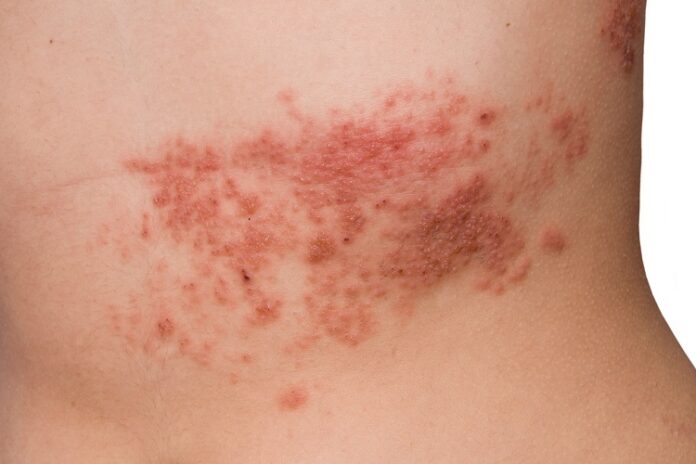To come across the name ‘Herpes Zoster’ and mistakenly associate it with the ever-famous Herpes disease is common and one should not be blamed entirely for the confusion. It is a type of virus that belongs to a group called herpes viruses which also comprises Herpes Simplex 1 and 2. Unlike them, Herpes Zoster does not cause the disease of its own namesake. However, it does produce a condition known as shingles.
Do you know there is a relationship between shingles and chicken pox? It is a known fact that the latter is a type of infection which is quite prominent for children. A virus with the name Varicella Zoster is the culprit behind it. Once the chicken pox goes away, unfortunately this group of varicella is not fond of moving out of your body, so they decide to make your nervous system as their home. Over the years they are dormant and would not cause any harm to the host but when certain situations occur, they will be happily reactivated and transform themselves into a much adult version, which is Herpes Zoster.
Several theories have been proposed to determine the definitive cause of the mentioned resurgent. They include failure of immune system to block the latent varicella replication, radiation, some types of medications, physical injury, stress and other infections. None of them however has been established as the primary cause of the resurface. Although patients with HIV infection (weak immunity) tend to get shingles easier than others, it still fails to refute the fact that healthy people with good immunological status is not uncommon to contract the disease.
But what is shingles? Getting the name from a Latin word, ‘cingulum’ which means belt or girdle, it is a type of painful rash that appears in a belt or band-like pattern affecting any part of the body. It usually begins with itching, tingling or burning at the area before developing a feeling of unwell, fever and/or headache. The rash would follow through within a day or two. Two to three days after that, it can turn into ulcers or open sores which sometimes can be further complicated by bacterial invasions. Individuals with good health normally take about three to four weeks to obtain a complete recovery.
Shingles itself is not contagious, but should one is exposed to the blisters of the carrier within one week of the onset, they will have a good chance to get infected with Varicella Zoster, which subsequently causing the chicken pox. Do not be afraid if you have had chicken pox before or even the chicken pox vaccination as only people who are varicella naïve will experience the impact. Touching or getting near to the persons with shingles will not bring any harm in any way should your body have already met the mentioned virus.
Herpes Zoster’s activity to the skin may seem to be quite simple and non-debilitating. It is indeed self-limiting but if you do not take this situation seriously then you have a high chance to be wrong. Complications might arise, and they certainly need special care from the healthcare professionals. Some of the problems that shingles can bring after it has gone away are pain, eye inflammation and ear disturbances. Pain after shingles or also identified as postherpetic neuralgia is the commonest complication. It can be so severe that it affects patients’ sleep, appetite, mental health and daily activities. For the eye, retina can be inflamed causing pain and even worse, vision loss should it is not being interfered accordingly. As of ear, Ramsay Hunt syndrome is the manifestation whereby painful vesicles are formed inside the ear canal and involves facial muscle weakness on the affected side of the ear.
Treating shingles is simple, and that is by taking in antiviral drugs. On the other hand, managing the complications is completely opposite. Various pain medications or analgesics must be explored by the doctors providing the care so that the most suitable one for the patient can be found. So, it is a must for patients to consult a medical expert when these problems appear. Read on herpes zoster answers by DoctorOnCall to know more about this infection.







